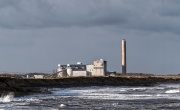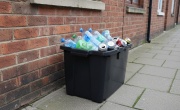Scotland aims to tackle lack of processing capacity for plastics, metals and batteries
Only 1.3 per cent of resources used in Scotland are cycled back into the economy in Waste Reproccessing Infrastructure report
 Scotland lacks domestic reprocessing capacity for high-value materials including plastics, metals and electronic waste, according to a comprehensive infrastructure assessment published by the Scottish Government last week.
Scotland lacks domestic reprocessing capacity for high-value materials including plastics, metals and electronic waste, according to a comprehensive infrastructure assessment published by the Scottish Government last week.
The report found that over 98 per cent of Scotland's material use still stems from virgin sources, with valuable resources worth millions being exported for treatment elsewhere.
The Waste Reprocessing Infrastructure in Scotland report, mandated under the Circular Economy (Scotland) Act 2024, examined 15 material streams and revealed dramatic variations in domestic processing capability.
While Scotland successfully manages organic waste, glass and construction materials domestically, it exports the majority of plastics, metals, paper and batteries for reprocessing, relying predominantly on elsewhere in the UK and the EU.
Scotland generated 9.55 million tonnes of waste in 2023, a reduction of around 20 per cent since 2011, of which 86 per cent was managed in Scotland.
Despite overall material recycling rates increasing from 52.5 per cent in 2011 to 62.2 per cent in 2023, only 1.3 per cent of resources used in Scotland are cycled back into the economy.This is compared with 7.5 per cent for the UK as a whole and 24.5 per cent for the Netherlands, an EU leader in circularity.
The government has identified six priorities for addressing capacity gaps: supporting strategic capability for critical raw materials and battery reprocessing, driving stable material supply, facilitating business access to waste streams, stimulating demand for reprocessed materials, pursuing EU policy alignment, and improving waste data systems.
Opportunity cost of not processing materials
The analysis identified domestic reprocessing capacity shortfalls across multiple material streams.
Approximately 78,000 tonnes of plastic waste is exported annually, with only 14 per cent of Scotland's 90,000 tonnes of available plastic reprocessed domestically. For aluminium, around 161,000 tonnes is exported with domestic facilities processing just 10 per cent of available material. Steel presents an even starker picture, with 379,000 tonnes exported and domestic processing handling only 8 per cent of the 412,000 tonnes available.
The report's executive summary highlights that a key objective is ‘preventing the loss of local economic opportunities’. The waste and resources sector contributed over £750 million to the Scottish economy in 2021, whilst the full UK material value chain was valued at £23.5 billion.
Zero Waste Scotland estimates that nearly one in 10 Scottish jobs is already related to the circular economy and additional domestic reprocessing infrastructure could significantly expand employment opportunities. Previous analysis has suggested that adopting circular business practices could be worth £1 billion in the regions of Tayside, Aberdeen and Aberdeenshire alone.
According to the report, ‘while the majority of reprocessing infrastructure investment is led by the private sector, the Scottish Government has also invested over £1 billion to support recycling and reprocessing infrastructure since 2016, including our £70m Recycling Improvement Fund’.
Strategic infrastructure needs emerge for net-zero materials
With Scotland leading UK renewable generation, significant quantities of valuable materials will require processing when first-generation wind turbines reach end-of-life from the 2030s. This highlights the strategic importance of domestic capacity for critical materials to Scotland's renewable energy transition.
In the report, Zero Waste Scotland estimates that approximately 5000 onshore wind turbines will require decommissioning between 2025 and 2050, which will result in 1.2-1.4 million tonnes of disused materials. Offshore wind presents an even larger opportunity, with 26 million tonnes of materials expected from consented installations by 2050, containing substantial quantities of steel, copper and rare earth elements.
Battery processing capacity represents another strategic priority. Global battery demand is projected to increase 14-fold by 2030, driven by electric vehicle adoption and renewable energy storage requirements. Scotland currently exports 78 per cent of battery waste, missing opportunities to recapture critical materials including lithium.
Current infrastructure comprises 169 licensed reprocessing facilities treating Scottish waste on-site, concentrated primarily in the central belt. An additional 14 facilities are progressing through planning stages, focusing on organic waste, aluminium, tyres and electronic waste.
High energy costs, market volatility and competition from imported virgin materials present ongoing challenges for domestic investment. Material contamination during collection reduces reprocessing viability, whilst secure long-term contracts can limit material availability for new facilities.
Scotland's performance demonstrates potential for significant improvement, particularly as packaging Extended Producer Responsibility implementation and the delayed Deposit Return Scheme will create new material flows scheduled for 2027.
This infrastructure report, alongside the Circular Economy and Waste Route Map to 2030 published last year, will inform Scotland's forthcoming circular economy strategy, which is due in 2026. Required under the 2024 Act, the strategy will be supported by new statutory targets planned from 2027.






